Drag Racing’s Infamous Hillbilly – Part II
If you caught Part One of Drag Racing’s Infamous Hillbilly, we told you about the early years of Roy Hill and his quest to pursue his dreams and goals of being a professional drag racer. For someone who barely made it through high school and skirted the long arm of the law with his “moonshine escapades,” Roy was running a successful service station, paying his bills and working his way up in the ultra-competitive world of “Run what you Brung,” heads-up match racing that permeated throughout drag strips in the south. It was early 1971 and the timing was perfect for Roy Hill to make a name for himself. Now in his mid-20s, Roy had maintained his connections with the prime movers of the day like Sox & Martin and Petty Enterprise. He had no factory support or sponsor dollars flowing his way like the major teams, but Roy had determination and grit. He worked harder, and smarter, and foraged through piles of used engine blocks, cylinder heads, intake manifolds, slicks and other race components sitting in the corners at the Sox & Martin shop in Burlington and Petty Enterprises over in High Point. “I had my own pile of used parts that came off Ronnie’s (Sox) car and Buddy Martin would set aside for me,” laughed Roy. “It was like ‘Those are Roy’s parts, just leave them there!’ I’d go through them and see what was still good and if it had any life left in it.” Roy had a knack for making getting more life out of used performance parts.
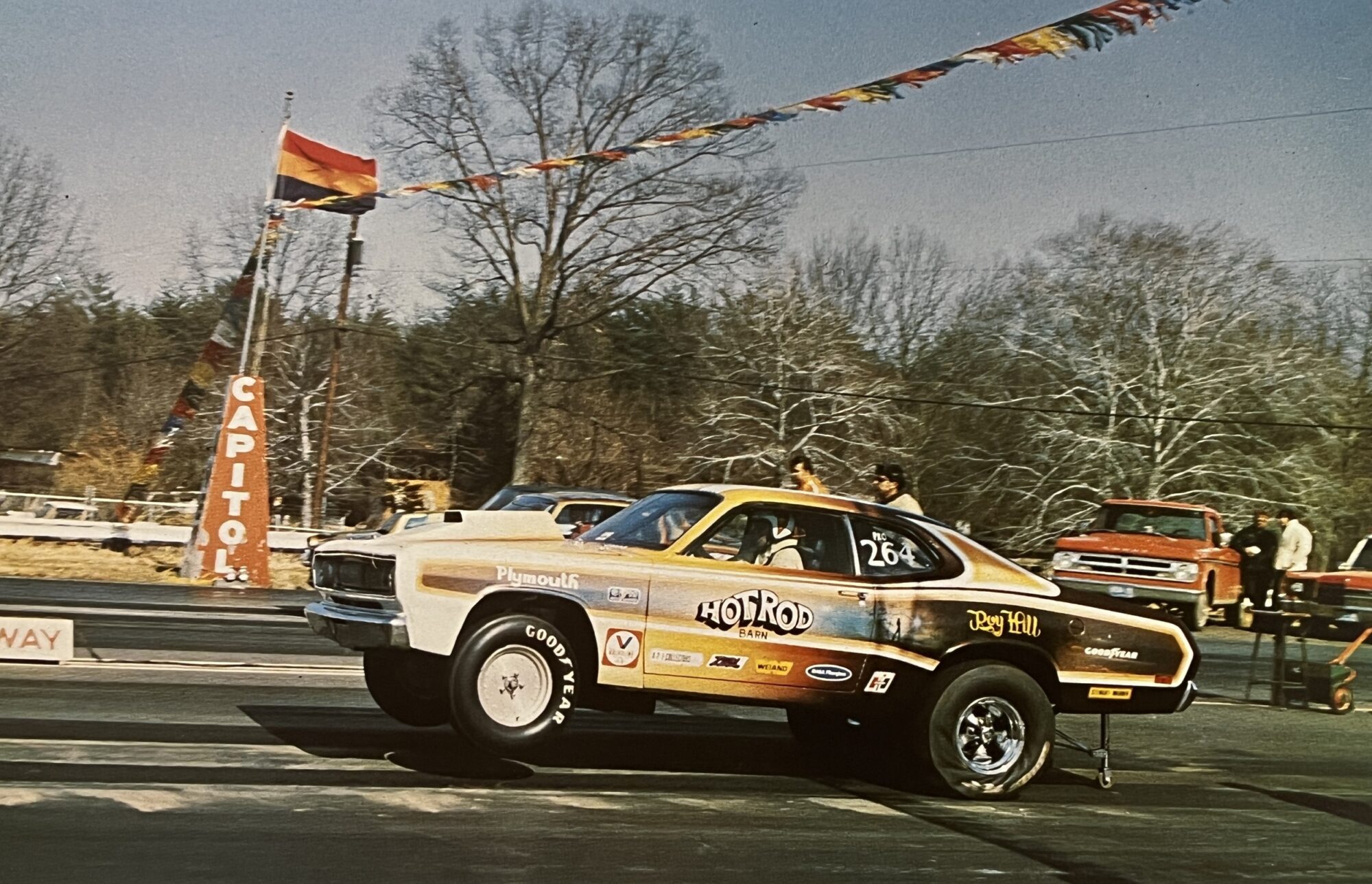
Despite being less than one year old, Pro Stock technology along with its more liberal rules and improved equipment ramped up at an alarming rate. Roy knew he’d pushed his trusty “Orange Krate” 1968 HEMI® Barracuda as far as it’d go to hang with the latest crop of new racecars being built. After all, his ’68 HEMI Barracuda was just an updated Super Stocker despite Roy removing as much weight as possible. He understood a new car with the latest suspension hardware and a lightened and “massaged” body shell would be needed to stay competitive. Since it was cheaper to buy a used racecar than having a new one built, Roy struck a deal with Ohio racer Bobby Yowell and purchased his one-year-old Plymouth Duster Pro Stocker. Yowell’s Duster was built by Sox & Martin at their shop and Roy knew it had all the good pieces for him to be competitive right out of the gate. “It was a trick car and I picked it up at Sox & Martin with no motor or trans. I took the car over to Petty’s shop to get a new cage welded in and put my HEMI motor and transmission in it and headed down the road to the NHRA Gatornationals. Going through tech was stressful as the wheelbase was off by two inches so we had to fix that by moving the rear axle back,” said Roy. “We went out and qualified faster than some of the big guys in the field, suddenly, everyone’s looking at me. I had a lot of luck with that Duster!”
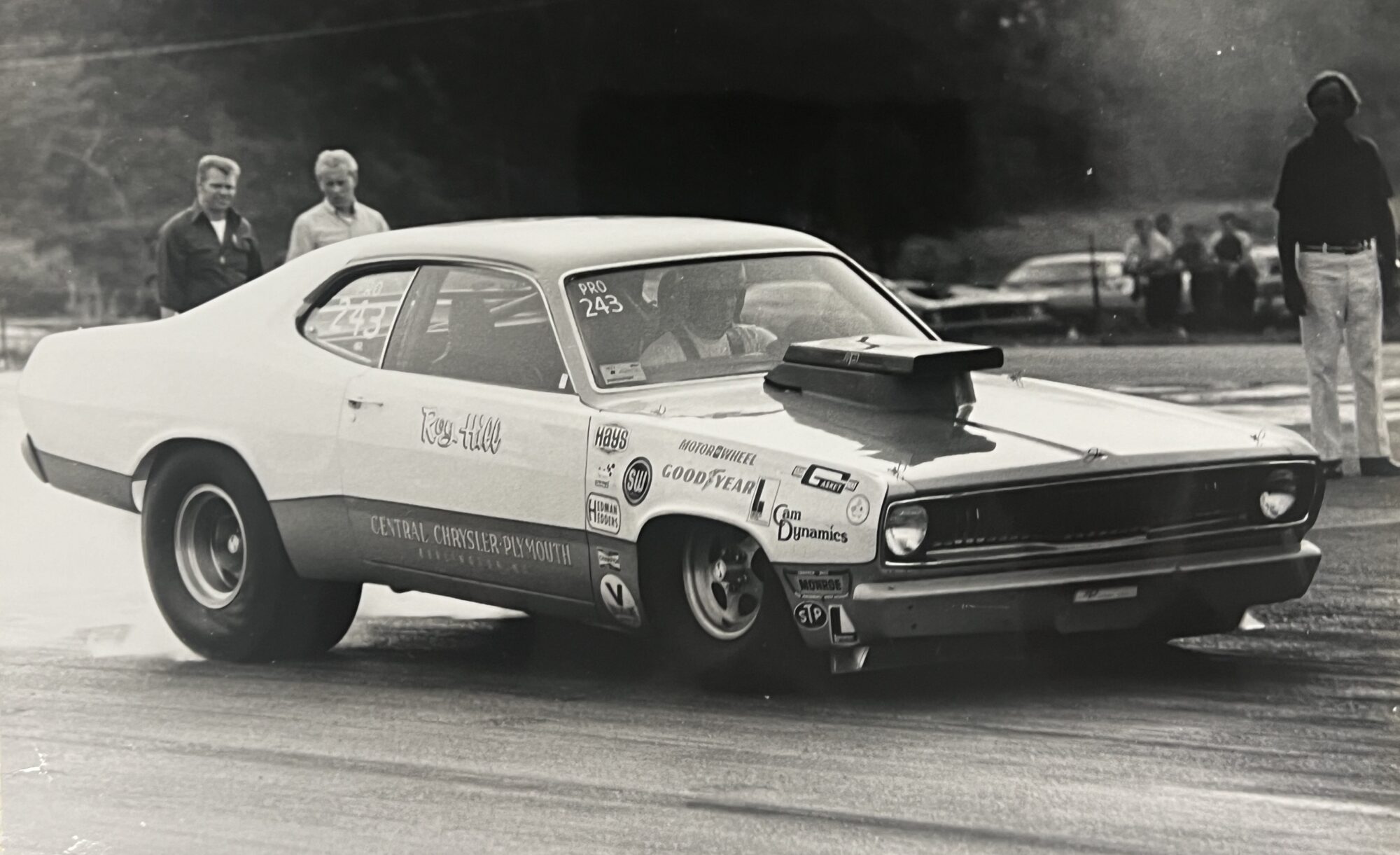
By 1972, Roy’s ambitions and need to go faster than his competitors were catalyst for him to build a brand-new car. After establishing himself as a serious racer, Chrysler Racing Program Manager Dick Maxwell took notice and got Roy a Duster Body-In-White in which he immediately had acid dipped to make it lighter. “Unfortunately, the body sat in the acid tank too long and when we pulled it out, there was nothing left but the chain,” chuckled Roy. So now Roy traveled back up to Detroit to the Chrysler plant to get another Duster body. This time, he didn’t destroy the shell as Roy etched various body parts to prevent the acid from eating certain areas of the sheet metal. “After the acid dipping, I took the body to Petty’s shop, but Maurice (Petty) said they didn’t have time to work on the car. I then went to Sox & Martin, but the car sat in their shop for weeks as they were also too busy building new cars for customers. I took the Duster back to the Pettys as now they had time to work on it. They built me a tricked car that had numerous suspension set-ups we could change quickly at the track. Having the corporation’s big-time NASCAR star build a Pro Stock Duster ruffled a few feathers within the Race Group at Chrysler. They felt Petty Enterprises shouldn’t be building me a Duster, they’re in the stock car business, not the drag racing business. So, some Chrysler execs called down to Petty’s shop, they got on a speaker phone, but no one back then could tell Richard or Maurice what they could or could not do, so the Pettys continued on the Duster project,” exclaimed Roy.
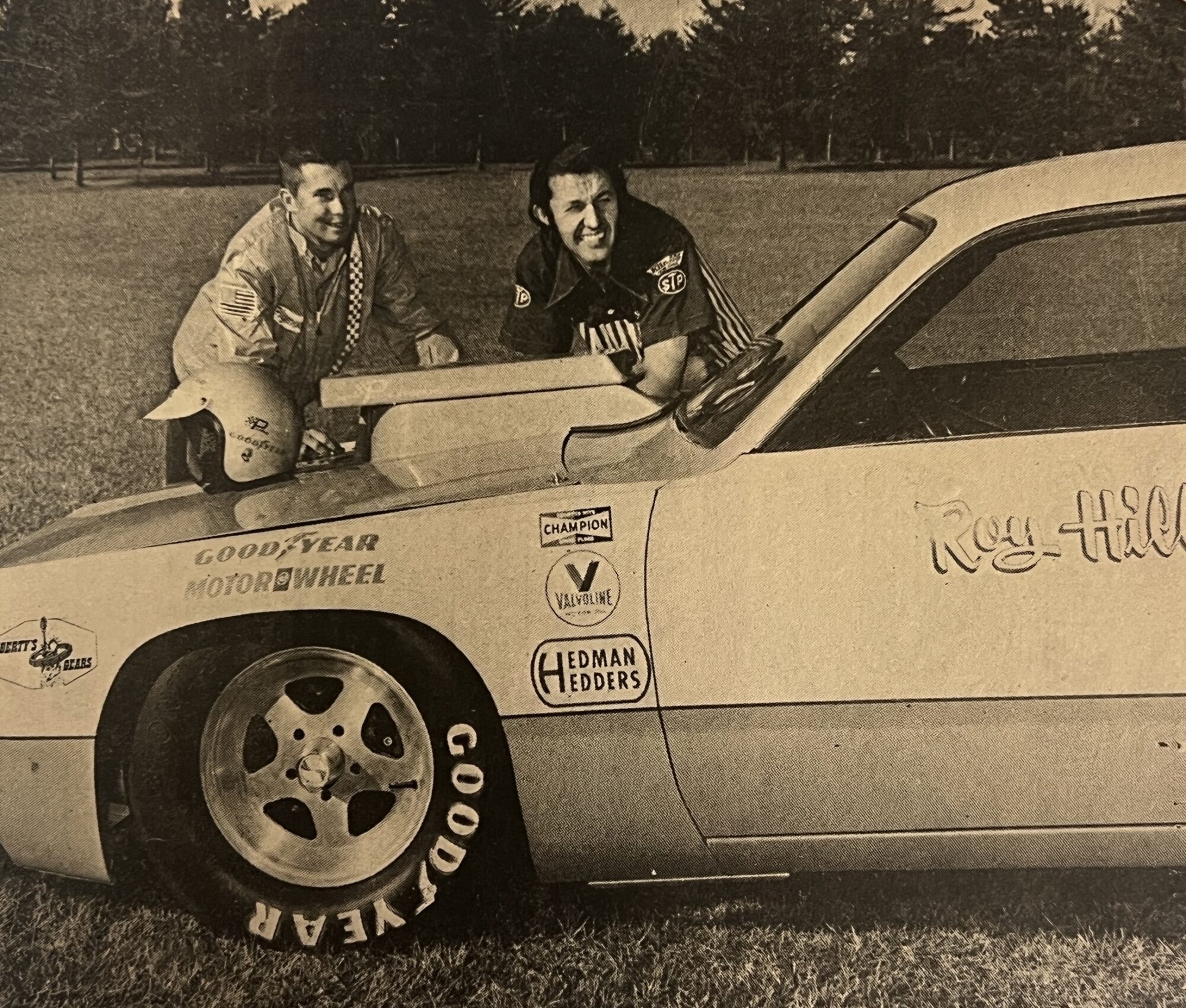
After this incident, Roy’s relationship with Chrysler wasn’t all “Kumbaya” despite receiving some parts support in the way of engine blocks and cylinder heads. “I still got invited to the test sessions and no one ran me off. But it was never a warm or fuzzy relationship after that,” noted Roy. With his new Petty-built Pro Stock HEMI Duster, Roy went on a tear attacking all the major NHRA and IHRA events around the country. Because of his association with the Pettys, it gave Roy some clout and even more exposure to sponsors, including Motor Wheel Corporation, Goodyear Tire and Rubber, and the iconic STP brand. Roy’s Duster also graced the cover and many racing magazines, including Super Stock and Drag and Illustrated and many print ads. But, it was Roy’s personality, country charm, “good ole boy” persona, and of course, his appearance that made different. It was a “Hillbilly” hat that Roy bought in some General Store that he wore all the time that made him stand out even more. Remember, this was an era in which a pair of Burt Reynolds movies (White Lightening and Gator), whose plot centered around southern stereotypes such as moonshine running and fast cars, were major hits among young audiences. Suddenly, southern-styled “Hillbillies” and their anti-establishment ways and their colorful characters, including Roy Hill, were cool and young folks wanted to look and even act like them. When the Motor Wheel Corporation in Lansing, Michigan, was trying to promote their new lightweight “Spyder” drag wheels, they reached out to Roy Hill and produced an iconic ad. “The ‘Hillbilly’ name just stuck, and I loved it,” laughed Roy.
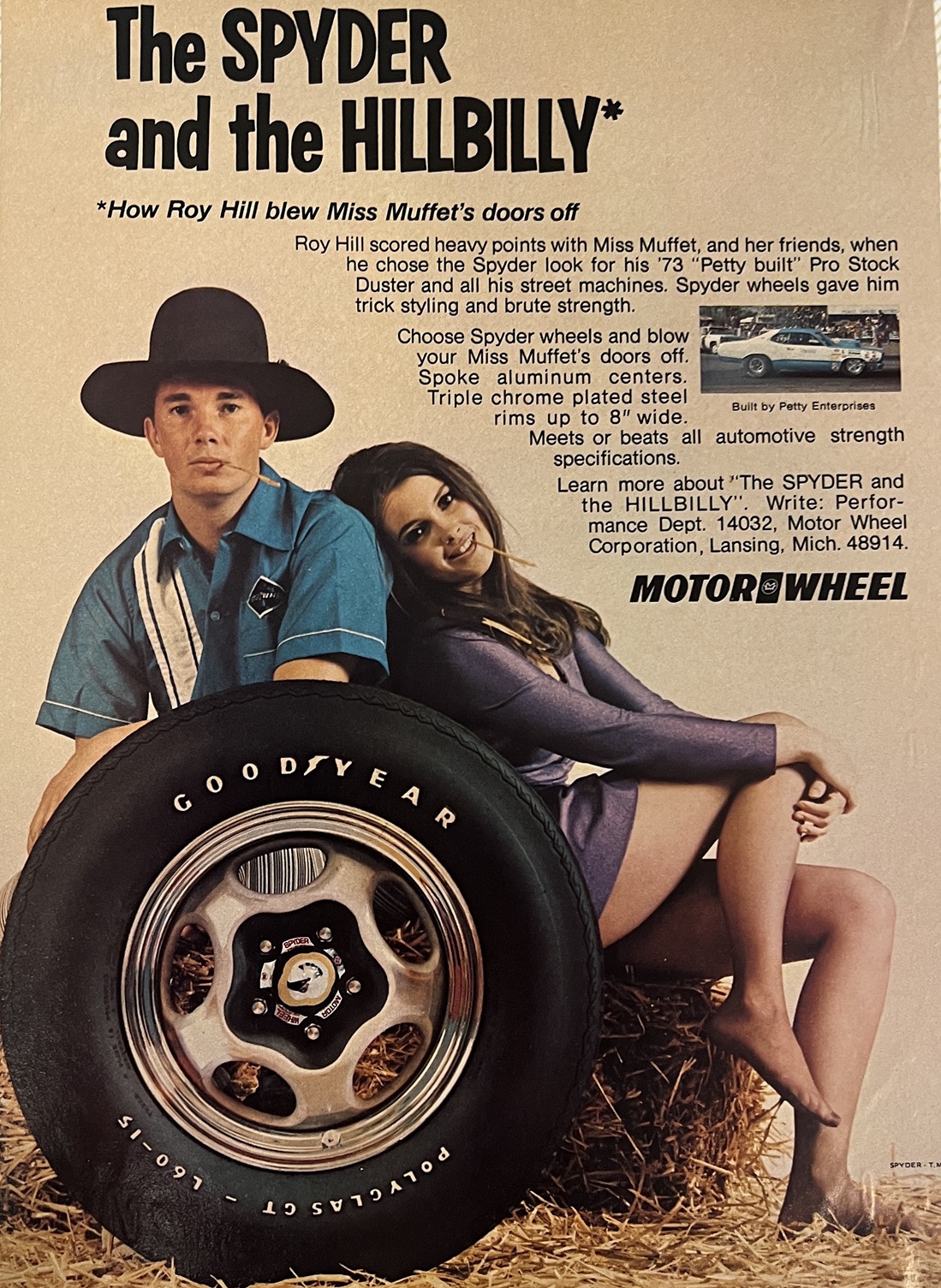
For Roy, it was much more than appearance. He was a serious drag racer and not to be taken lightly whether you lined up next to him on the strip or were having a dispute over a woman at a bar. He was also very humble and never forgot the folks who helped him out in his racing career. “The Petty car created a name for me. I did a lot of match racing back then and if Ronnie (Sox) couldn’t make a race, Buddy (Martin) would call me, and I’d show up and make some money,” noted Roy. His off-track “antics” also became legendary along with his association with many racing “royalty” of that era, including Linda Vaughn. But in 1971, the Federal Trade Commission (FTC) banned cigarette ads on TV. R. J. Reynolds looked for another venue to promote their brands and reached out the NHRA and IHRA to be a series sponsor. With Roy Hill’s charms and connections in drag racing, he helped influence the decision-makers in putting the deal together. For a guy who came up the hard way, Roy had become a major player in the fast-paced world of professional drag racing.

As the 1970s progressed, so did the ever-changing drag racing rules in both the NHRA and IHRA Pro Stock classes. By 1977, Roy’s Petty-built Duster was no longer competitive due to its massive girth compared to the compact Chevy Vega and Ford Pinto Pro Stockers that were dominating the class. He went through numerous cars, including a Dodge Colt and even a Plymouth Horizon before his inevitable switch to Ford and Lincoln Mercury in the early 1980s. “I had gone as far as I could go with Chrysler products. The NHRA Pro Stock rules against Chrysler cars were just crazy and they weren’t competitive by any means. The NHRA tech guys just took a pen and wrote them out of business. So, I built a Mustang and eventually changed it over to a Mercury Capri after I met with the execs at Lincoln Mercury and Motorcraft,” said Roy.
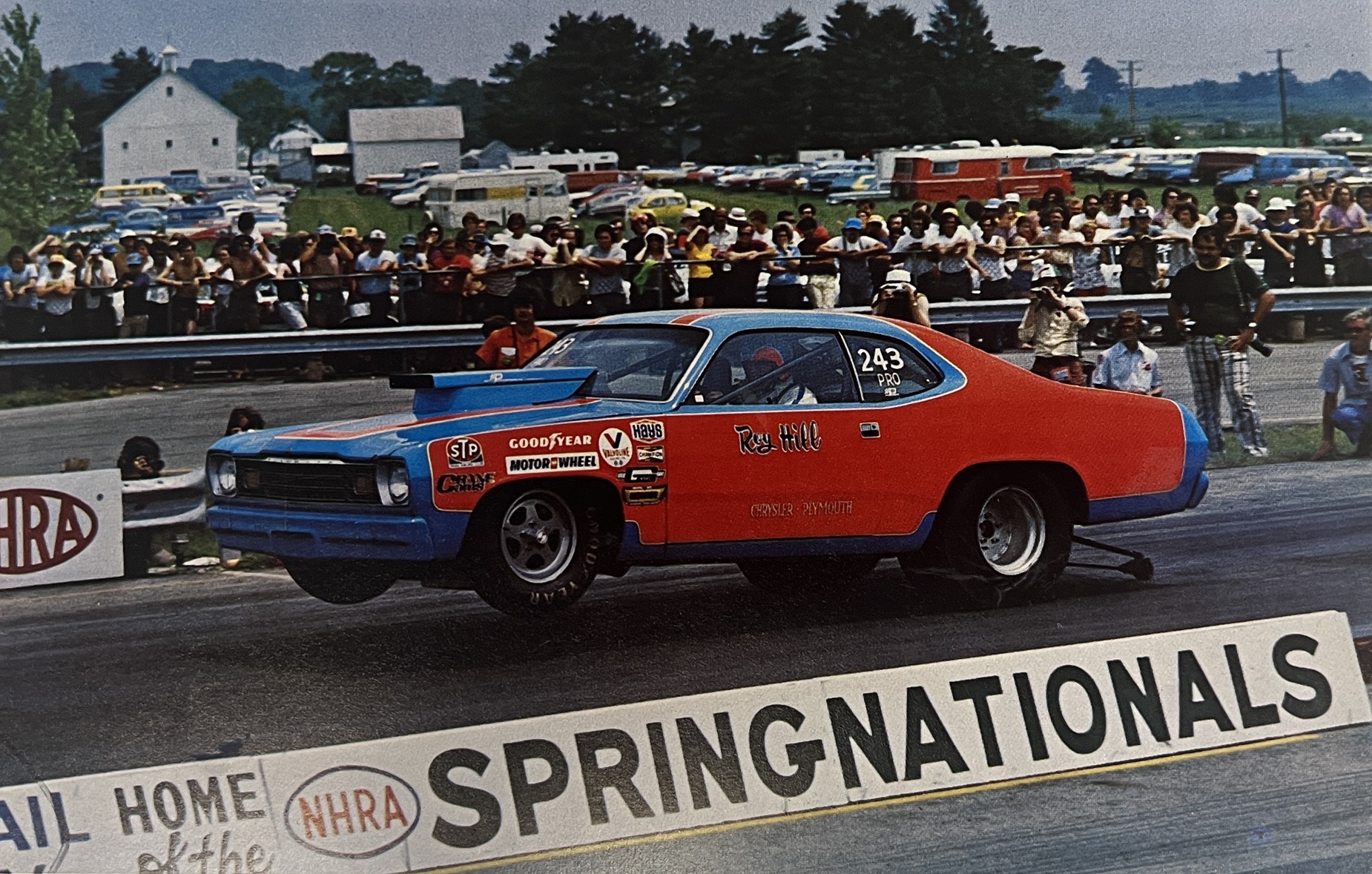
After racing Ford products for the past 40 decades and starting a successful drag racing school in which many future world champs would attend, Roy’s still “Mopar Guy” at heart and never to be crossed or taken lightly. Just a few years ago, he was racing some fast Cobra Jet Mustangs at the NHRA US Nationals and beating drivers half his age. Roy might be 78 and have health issues like many of us, but he has no problem getting into a brawl with anyone who crosses him up. Roy Hill is one of a kind and the likes of someone we’ll probably never run across again.
Roy Hill opened up his photo album for us, so check out these awesome pics of his HEMI engine-powered Mopar vehicles from the 1970s!
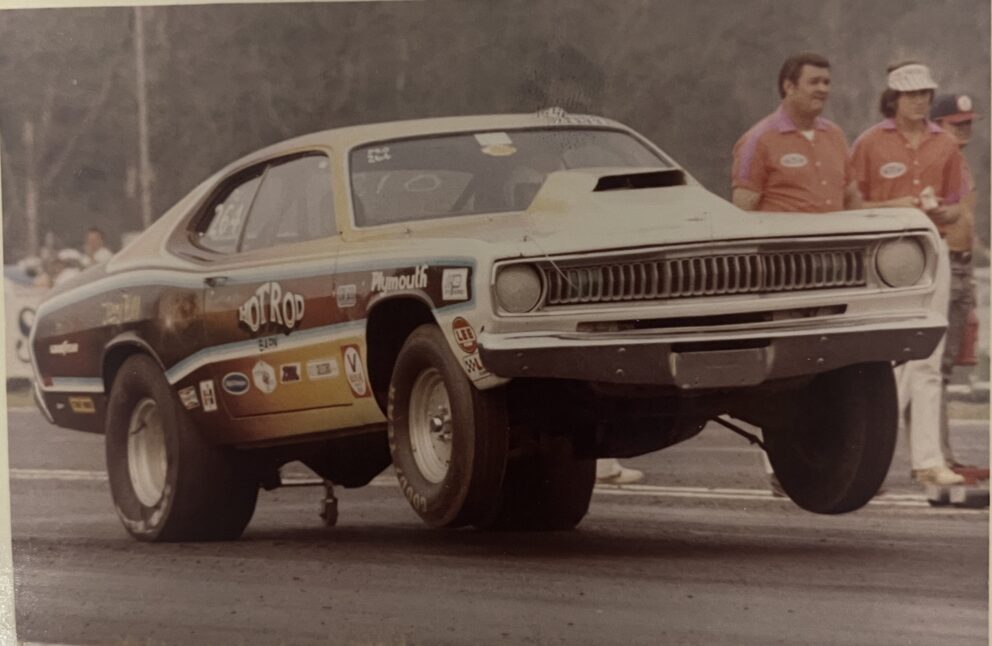

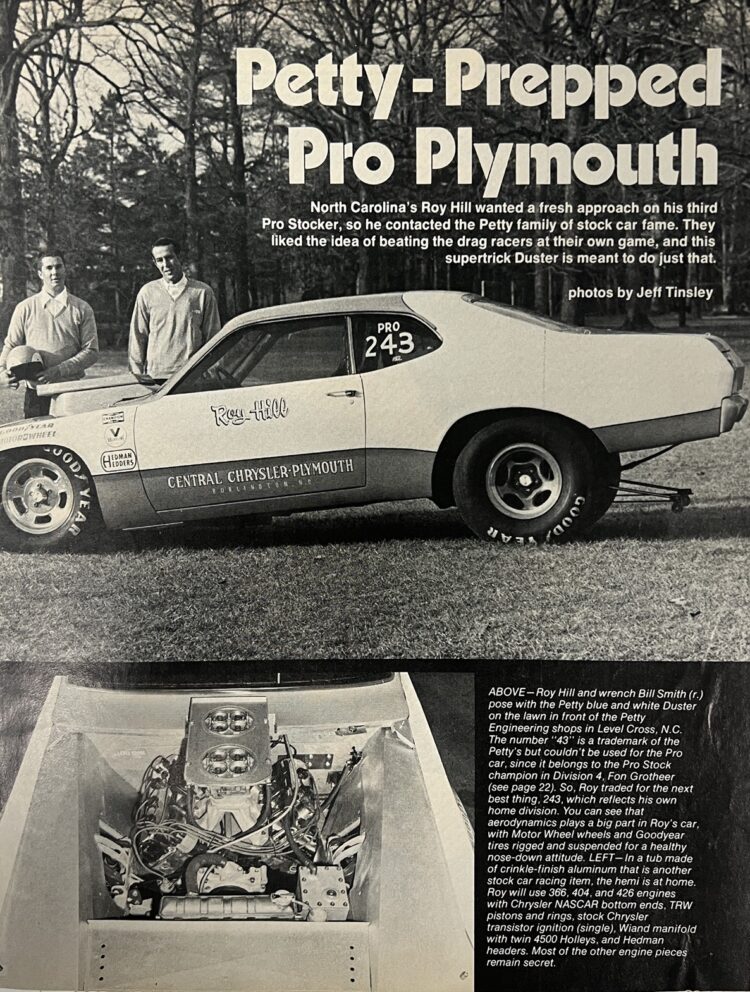


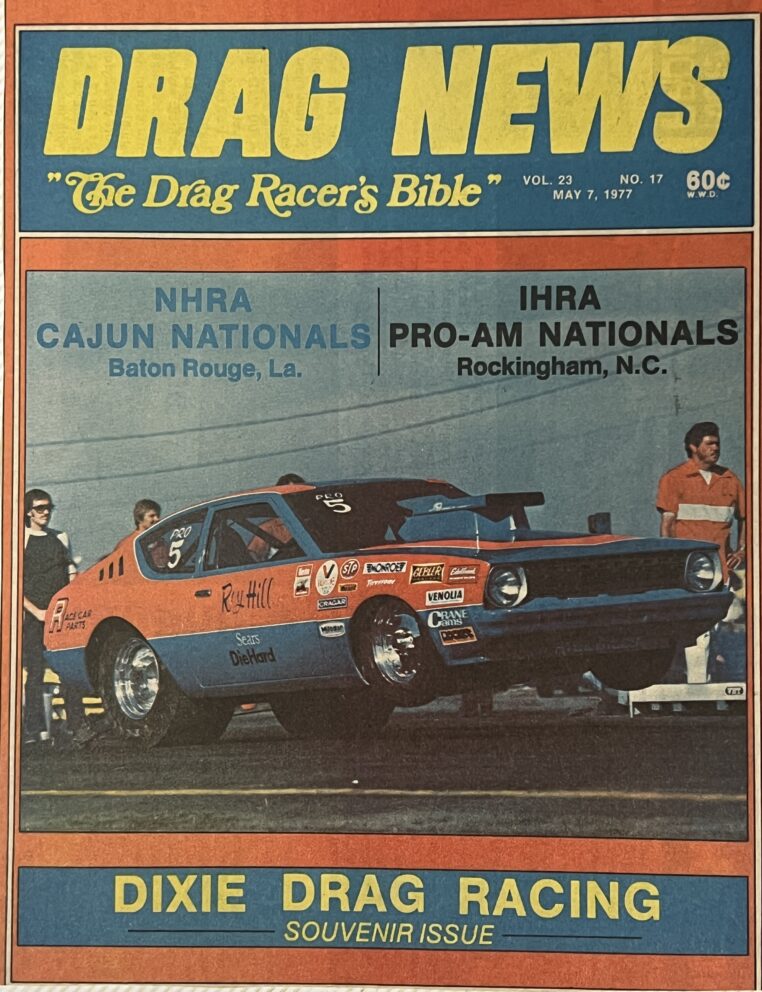


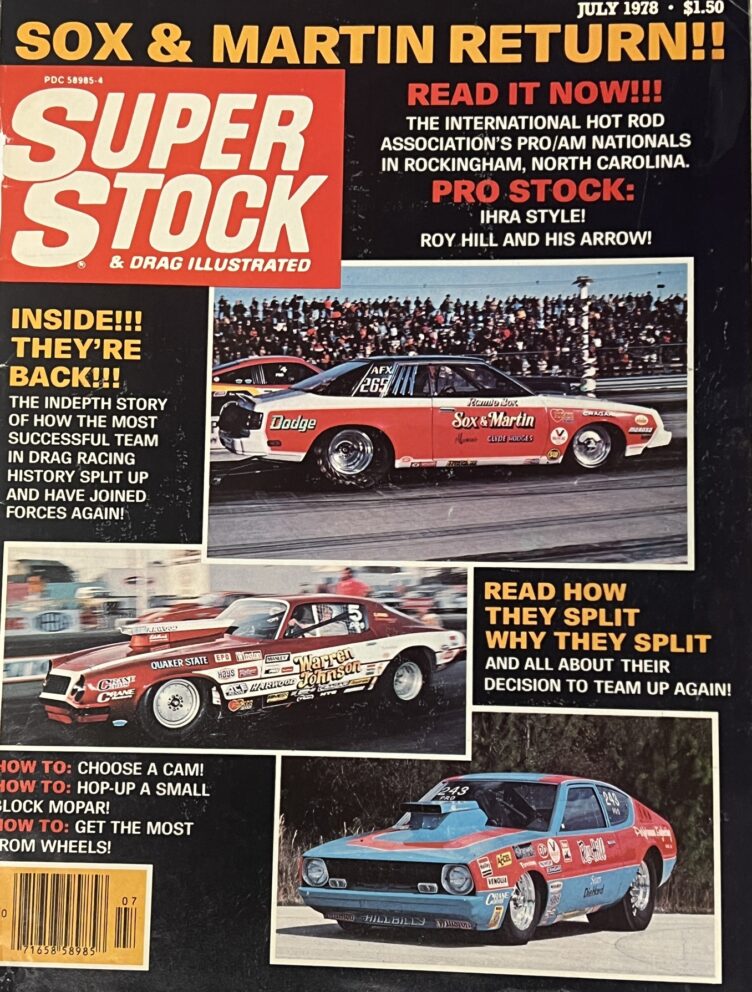
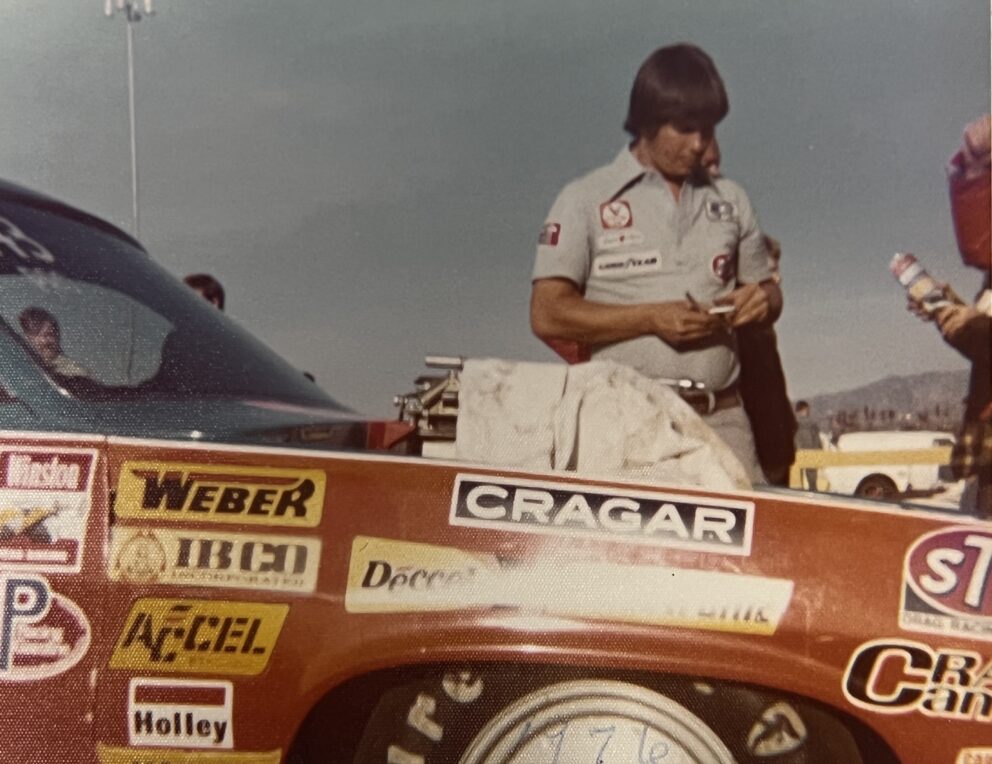

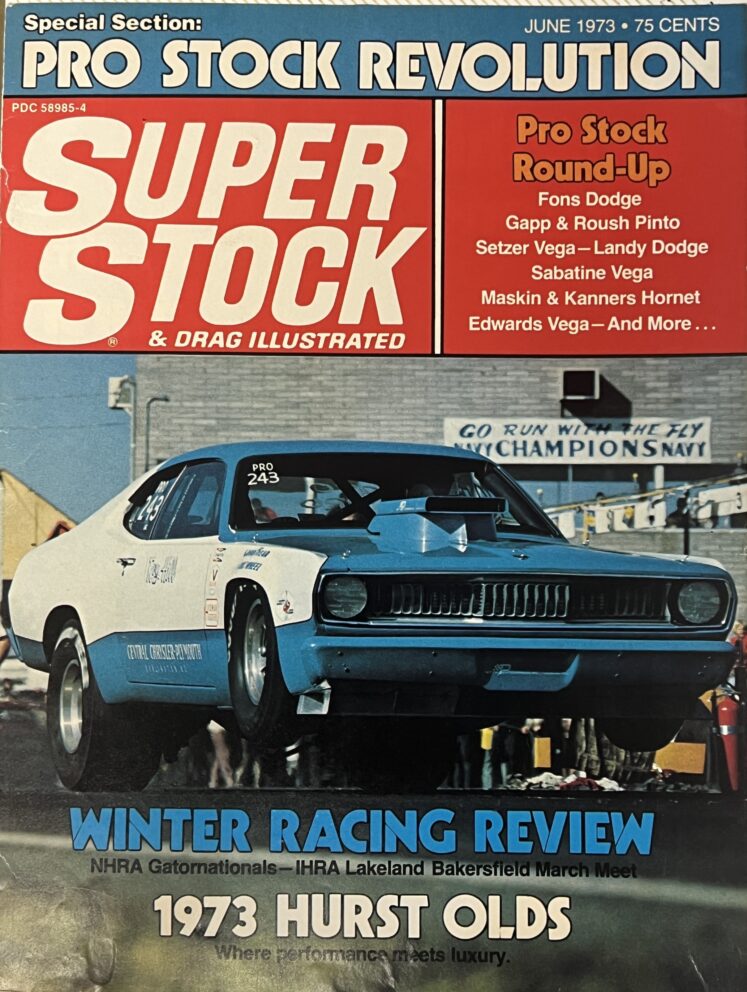
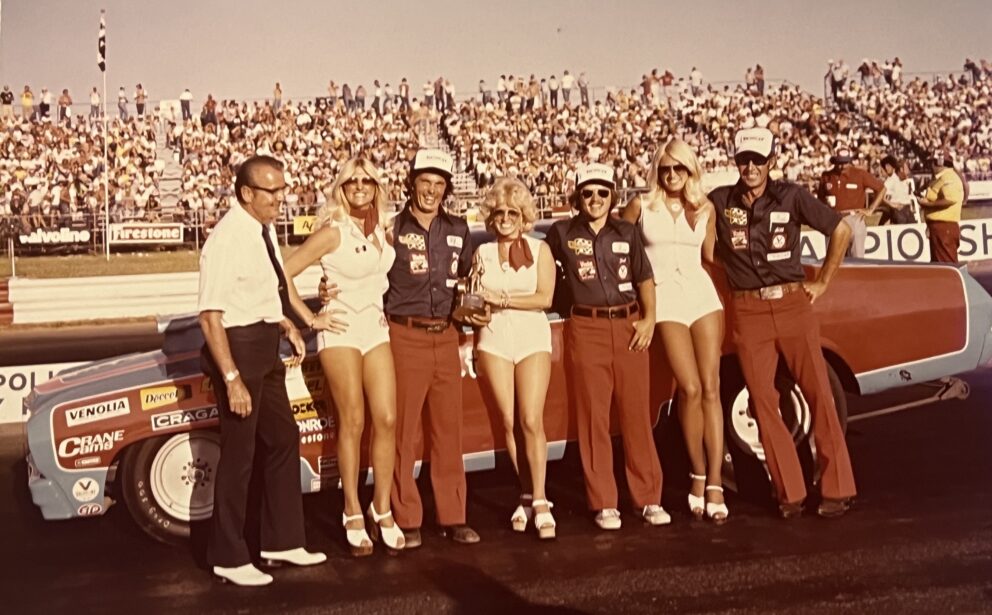

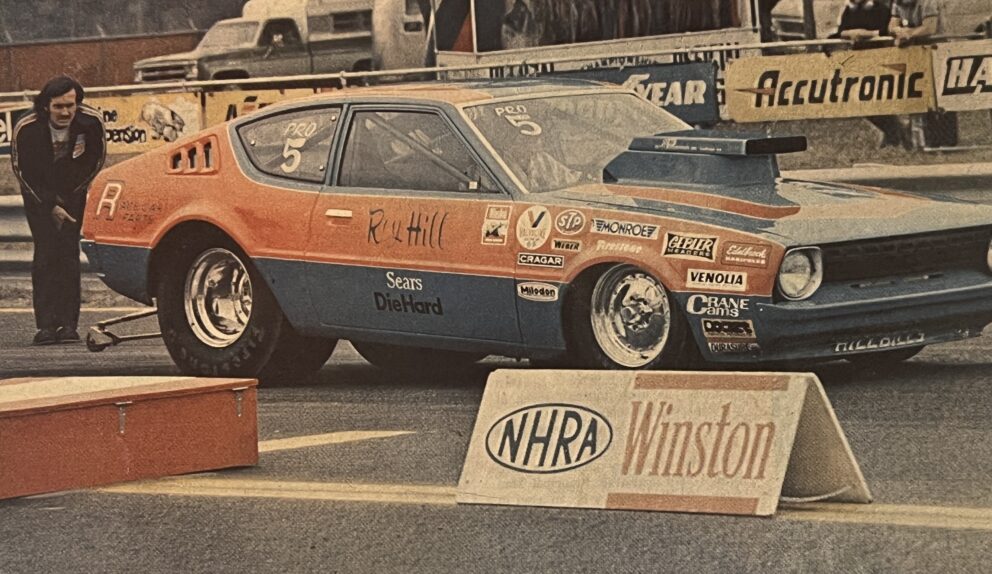
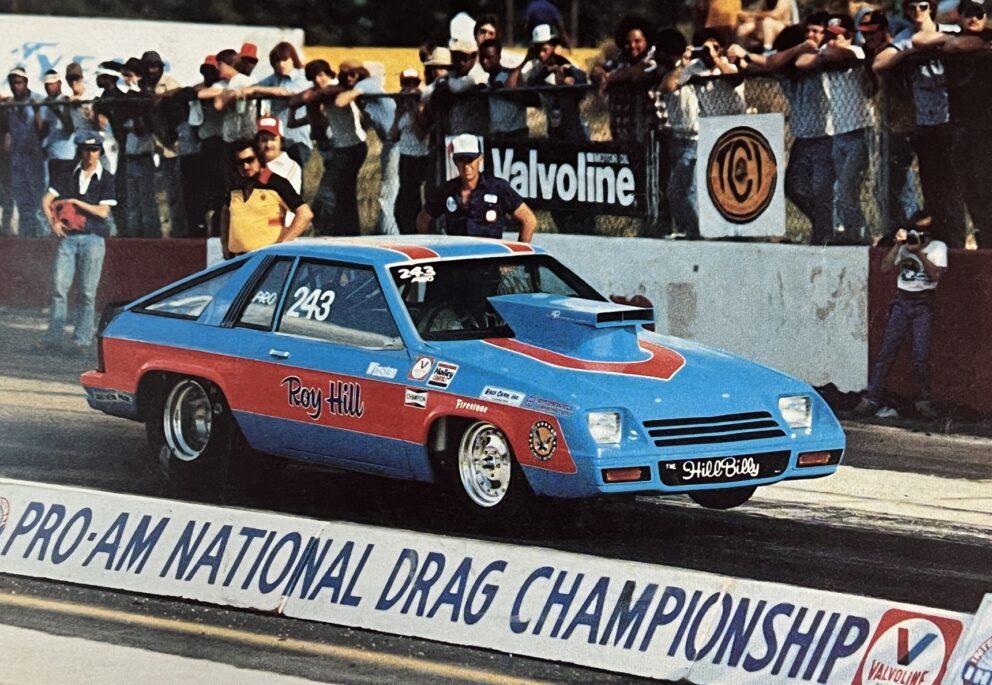
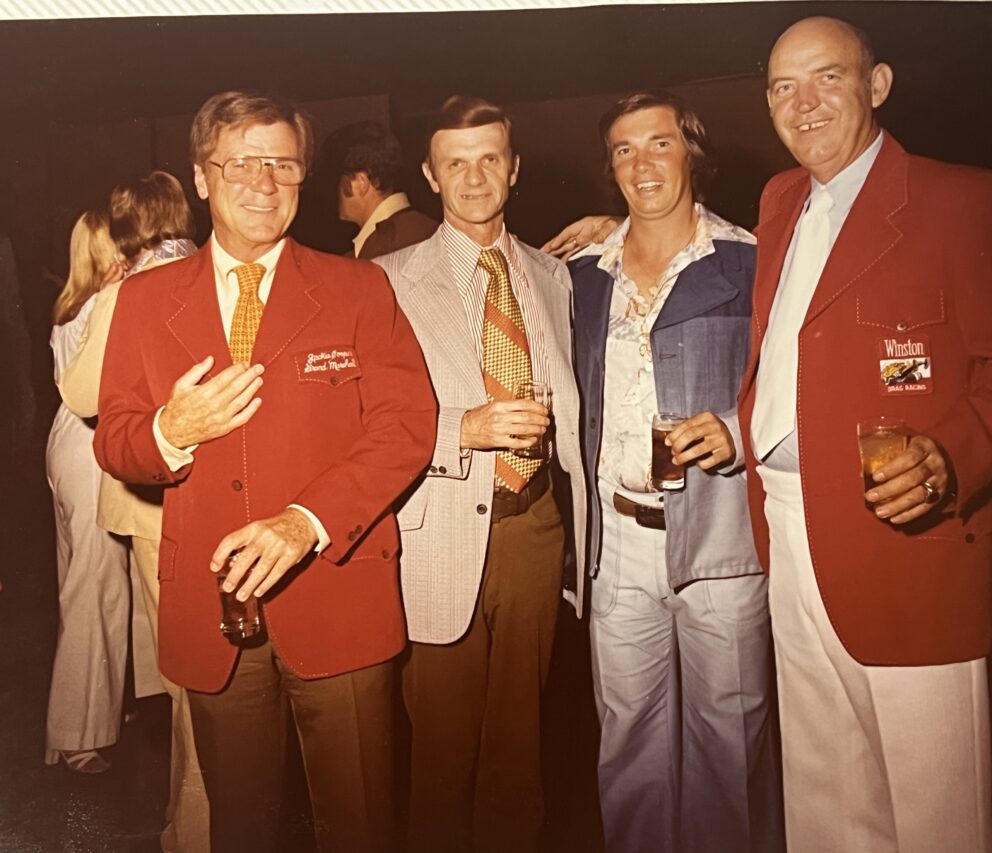
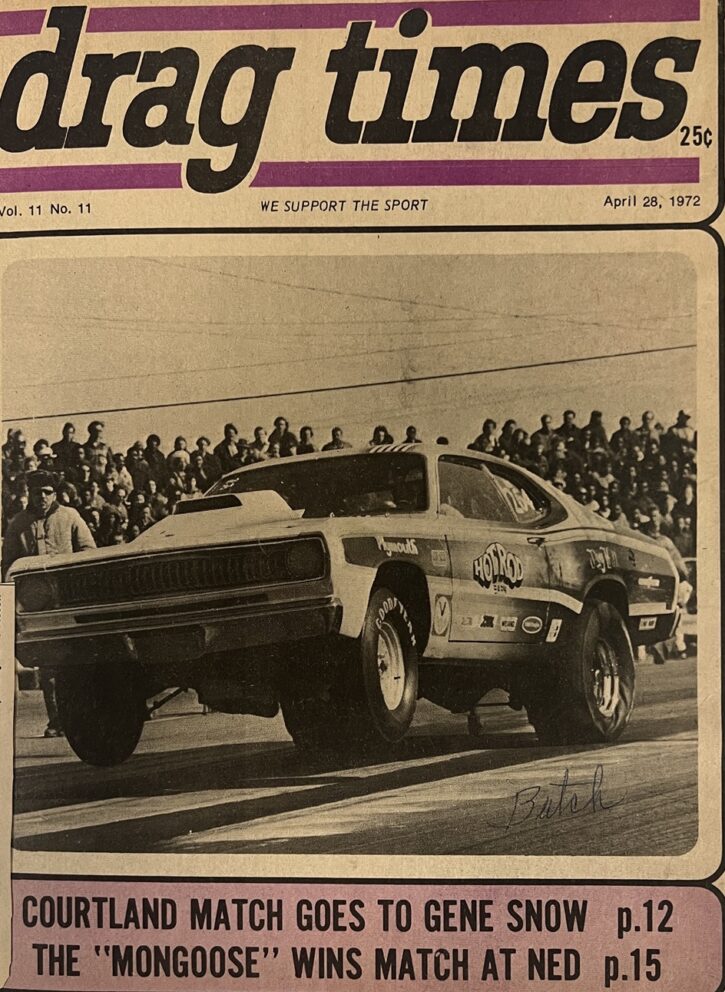

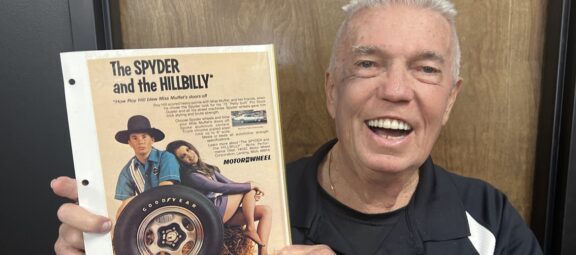
0 Comments